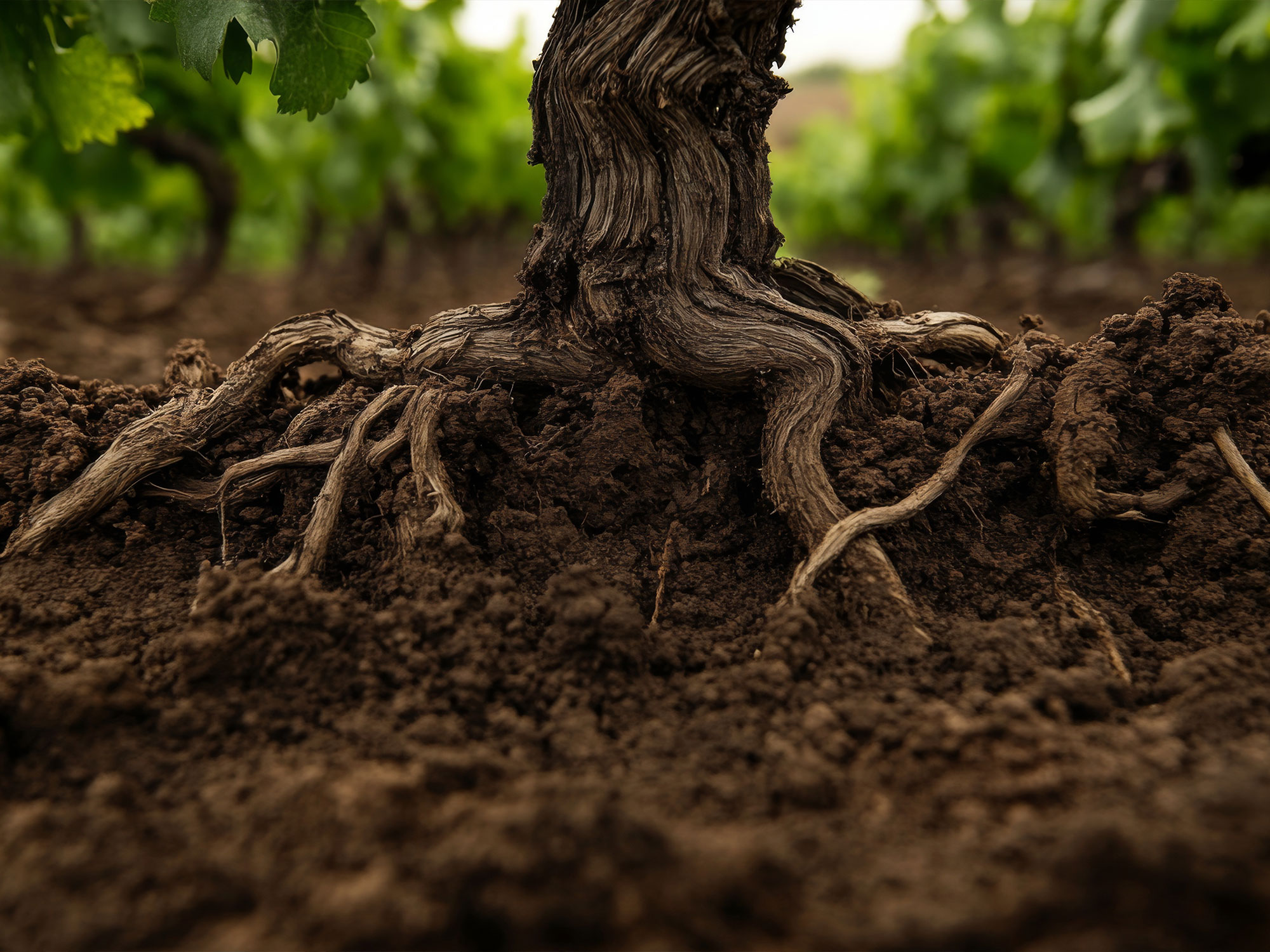
The Distinctive Wines of Alsace: French Terroir and German Legacy
Immerse in Alsace’s aromatic whites, terroir personalities, and balance between elegance and tension.
Make 2026 THE year.
Take 10% OFF your first 12 months of Tasting Group!
Code:

When studying wine, knowing about soil is key to helping you understand how land area can influence certain wine varietals. There are all too many soil types in the world, and I found myself constantly mixing them up (or forgetting what they meant) pretty much all the time! So I did a little digging and created an easy to understand guide to wine soils.
The most important soils to know, are the 4 soil compositions (shown immediately below). These basically tell you how porous the ground is. (Water drainage is important to vines!) Often these 4 soil compositions can be blended. Below these ‘blends’ of soil, I outline the various soil types or rocks (Sedimentary, Metamorphic, and Igneous) that make up these soil compositions. Are you following? I hope so! Here’s a breakdown that will hopefully give you a little less of a headache when studying wine and soil!
(how porous the soil is)
The most porous of all! Gravel has great drainage, but poor water retention, which makes it very infertile (roots have to dig down deep to find nutrients)! On the upside, the big rocks retain heat well!
LEADS TO: bigger, more alcoholic wines
GRAPES/REGIONS: Cabernet loves this soil. It’s found in Left Bank Bordeaux (including Sauternes and Graves), Piedmont, Friuli, and The Rhone Valley (Chateauneuf Du Pape) along with various other places.
Smaller grained and slightly less porous. Sand has good drainage and little water retention. It is slightly more fertile than gravel, and also has great heat retention. Sand is great for wetter climates. It’s also known to resist Phylloxera.
LEADS TO: elegant, delicate, smooth, aromatic wines with low tannin (sometimes too thin)
GRAPES/REGIONS: Cabernet Sauvignon, Sauvignon Blanc, Zinfandel, and Nebbiolo love this soil. It’s found in Bordeaux (generally left bank), Piedmont (Barolo), Chile (Maipo), and California (Lodi, Santa Barbara).
Finer grained than sand (like flour) and not very porous. Silt has pretty poor drainage and is one of the most water retaining. This makes it more fertile. It is still fairly heat retaining, however.
LEADS TO: smooth, concentrated, round wines with low tannin
GRAPES/REGIONS: Pinot Noir, Pinot Gris, and Gruner Veltliner love this soil. It’s found in Washington, Oregon, Germany, and Austria.
The least pourous, and most dense. Soil has the least drainage and is super water retaining. It is the most fertile, allowing it to store water and nutrients. It is also the least head retaining, which keeps the soil cool.
LEADS TO: dense, bold wines with lots of color
GRAPES/REGIONS: Merlot, Tempranillo, and Sangiovese love this soil It’s found in Right Bank Bordeaux (Pomerol) Australia (Barossa) and California (Napa) along with various other places.
↑ These can also be blended to create the soils listed below:
A blend of sand, silt, and clay in generally equal amounts. This soil is super fertile and needs good vineyard management (limited yields) or to be blended with other soil types. Generally, these types are found in Valley areas.
A blend of gravel, sand, silt, and clay generally deposited by water. Also very fertile and found in valley floor areas.
A blend of sand, silt, and clay generally formed by the weathering of rocks and shells and have high levels of Calcium and Magnesium Carbonate. These soils are made up of limestone primarily.
Types of calcareous soils include:
MARL is a blend of clay and limestone. This soil is found in Bordeaux and Rioja, as both Merlot and Tempranillo fair well in it!
KIMMERIDGEIAN MARL is unique in that it’s made up of fossils and shells from the Jurassic age! These soils are found in Chablis, Champagne, and the eastern Loire.
ALBARESE is a marl specific to Chianti (Sangiovese).
(or types of rock that create the above mentioned soil compositions)
(solidified deposits by water)
Retains water, but also provides good drainage! Leads to bright acidity and wines that age well. Pinot Noir, Chardonnay, and Sauvignon Blanc grow well in limestone.
CHALK is a type of soft Limestone that works well for grapes with high acidity.
TERRA ROSA is soil that is left when all the limestone is broken down. It has increased levels of iron that turn it red and can be found in Australia and Spain.
Retains heat well and is found primarily in the Eastern Loire Valley. It is said to contribute to the smokey flavors in Pouilly Fume!
Formed by grains of mostly quartz and feldspar, sandstone is found in Alsace and Chianti as well as other areas.
(alluvial deposits formed by pressure)
Retains heat and warms quickly. This is great for cool climate regions like the Mosel.
FYI – SHALE is basically slate under pressure
Harder than slate, schist retains heat well. This leads to big, dense, powerful wines with good minerality. It is found in Spain in Alsace.
GALESTRO is a type of schist in Tuscany.
Made from a combination of minerals. It is very infertile and often found in Austria.
(formed by the cooling of lava within the earth)
Drains well, but also retains water. It also retains heat and is great for hot regions. This is found in Spain and Sicily as well as other regions.
Great drainage and retains heat, warming pretty quickly. It is also a higher acid soil that lends to higher acid wines. It is found in Beaujolais, Alsace, and Spain (Rias Baixas).


Immerse in Alsace’s aromatic whites, terroir personalities, and balance between elegance and tension.

Explore how the French Wine Scholar focuses on French regions, storytelling, and exam structure, offering a distinct experience from WSET3.

Explore six commonly used yet vague wine terms like “natural,” “clean,” and “small production” and learn why they often lack clear definitions or regulations.
No matter your current skill level, we can help you improve – pass that exam, share your wine knowledge with others, guide your buyers, enhance your guests’ experience, and show up with confidence and credibility as a wine professional!
Feeling overwhelmed by everything there is to study in wine?
Struggling to stay consistent with tasting, or make it feel purposeful?
Craving connection with others who get what you’re working toward?
Let’s make studying wine less overwhelming, more consistent, and fully enjoyable!
Enter your email below to join our wine newsletter, where we share expert tips, study tools, tasting insights, and updates to support you on your wine journey!
By submitting, you are consenting to receive marketing emails from The Grape Grind. You can unsubscribe at any time.
Want to get better at tasting wine?